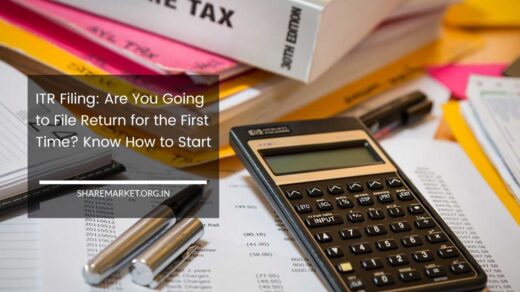Gilt Funds: Should You Invest?

Gilt Funds
Gilt Funds: Are They Right for You?
Gilt funds are investment funds that primarily invest in long-dated securities, such as government bonds, whose prices tend to increase in falling yield environments.
Over the last year, from July 10 of the previous year to the present, gilt funds as a category have delivered a return of 6.89 percent.
In June, the investor allocated funds to gilt funds, following a small investment made in May. The investor’s investment in gilt funds in May amounted to Rs 127 crore, while in the subsequent month, they increased their investment to Rs 396 crore. The investor is now contemplating whether it is the right time to invest in gilt funds.
On February 28, 2023, the 10-year benchmark bond yield reached a high of 7.42 percent. However, since then, the yield has been declining. Many investors have been investing in long-term gilts through mutual funds to take advantage of indexation.
As a result, the benchmark 10-year government bond yield stood at 7.16 percent on July 10, temporarily slipping below the psychological level of 7 percent in the previous month.
The decline in demand for long-term government bonds caused the yield to rise.
Considering this context, the decision to invest in gilt funds depends on various factors, such as the investor’s risk appetite, investment goals, and market conditions.
Gilt funds have the potential to perform well when bond yields fall, as their prices tend to rise in such environments.
However, if the demand for long-term government bonds diminishes and yields start to rise again, it could impact the performance of gilt funds.
Therefore, investors should carefully evaluate their investment objectives, consult with a financial advisor, and consider the prevailing market conditions before making a decision.
It is essential to assess the potential risks and rewards associated with gilt funds and align them with one’s investment strategy.
Yield Depends on Many Factors
The yield on the 10-year benchmark bond is influenced by various factors, and one of the significant determinants is inflation estimates.
Currently, most market participants and the Reserve Bank of India (RBI) do not anticipate a significant decline in inflation.
As a result, the RBI has maintained the policy rate (repo rate) at its current level, as inflation has not decreased significantly.
Expectations regarding future interest rate movements also play a crucial role in influencing long-term bond yields, including the 10-year benchmark bond yield.
If interest rates are anticipated to decline in the upcoming year, it can have an impact on the yields of long-term bonds as well.
When interest rates decrease, the yields on existing bonds become relatively more attractive, which can lead to an increase in their prices and a subsequent decline in yields.
It’s important to note that market conditions are dynamic and can change based on various economic factors, policy decisions, and external events.
Therefore, the yield on the 10-year benchmark bond and its relationship with inflation and interest rates should be monitored regularly.
Anticipated Stability: Foreseeing Interest Rates Maintaining Current Levels
According to Marjban Irani, the Chief Investment Officer (Debt) at LIC Mutual Fund, there are certain factors indicating that interest rates may not decrease in the near future. Irani points out that the global economy is facing uncertainties, while the domestic economy is experiencing good growth.
Additionally, inflation is hovering around 4.5 percent, which suggests that the Reserve Bank of India (RBI) may not rush to lower interest rates.
Irani anticipates that interest rates may start decreasing in the following year. However, he suggests that short-term bond yields are likely to decline before long-term bond yields.
This implies that the yields on shorter-duration bonds are expected to fall earlier than the yields on longer-duration bonds.
Furthermore, Irani expresses the view that inflation might increase before eventually subsiding. Inflation is an important consideration for central banks when determining monetary policy, including interest rates. If inflation rises, the RBI may prioritize controlling inflation over lowering interest rates.
Short Term Yield Will Come Down First
According to Joydeep Sen, a corporate trainer specializing in debt, the spread between the repo rate and the 10-year bond yield has historically averaged around 1 percent.
However, at present, the spread stands at 65 basis points, indicating that there is currently no urgent need to invest in gilt funds for trading gains.
In March 2023, there was a significant influx of investments amounting to Rs 4,430 crore in gilt funds. This surge in investments can be attributed to the removal of the indexation benefit and the elimination of the concessional rate of 20 percent long-term capital gains tax on holding units of debt funds for a period of 3 years from March 31, 2023.
Many investors sought to capitalize on this opportunity before the changes came into effect.
The decline in long-term bond yields also contributed to the increased interest in gilt funds. Gilt funds predominantly invest in long-dated securities, which have the tendency to appreciate in value when bond yields fall.
As a result, the performance of gilt funds as a category has been positive, delivering a return of 6.89 percent over the past year, ending on July 10.
Considering these factors, investors were attracted to gilt funds due to the potential for capital appreciation in the long-term securities held by these funds, as well as the historical performance of the category.
However, it’s important to note that past performance is not indicative of future results, and investing in gilt funds or any other financial instrument carries risks.
What You Should Do?
According to experts, the current scenario regarding gilt funds suggests that there might be limited opportunities for investors to generate quick profits.
However, it is viewed as a favorable entry point for informed investors who are looking to earn returns ranging from 7.15 to 7.25 percent from the 10-year benchmark bond over a period of 2-3 years, as stated by Marjban Irani.
Gilt funds primarily invest in government bonds, and the duration of these funds is determined by the fund managers based on their outlook on interest rates.
As of June 30, 2023, the average time to maturity and modified duration of gilt funds were reported as 5.68 years and 3.97 years, respectively.
It’s important to note that these are average values, and some schemes may have a longer time to maturity, stretching up to 9 years.
To mitigate the impact of volatility associated with long-term bonds, experts recommend adopting a long-term investment approach.
By investing for the long term, investors can potentially benefit from the appreciation in value of the underlying government bonds held by gilt funds.
It is crucial for investors to carefully consider their investment objectives, risk tolerance, and time horizon before deciding to invest in gilt funds or any other investment instrument.
Consulting with a financial advisor can provide personalized guidance and help align investment decisions with individual financial goals.
Furthermore, investors should understand that investing in any financial instrument carries inherent risks, and past performance may not guarantee future results.
Monitoring market conditions, staying informed about economic indicators, and regularly reviewing investment strategies are essential for making informed investment decisions.

















